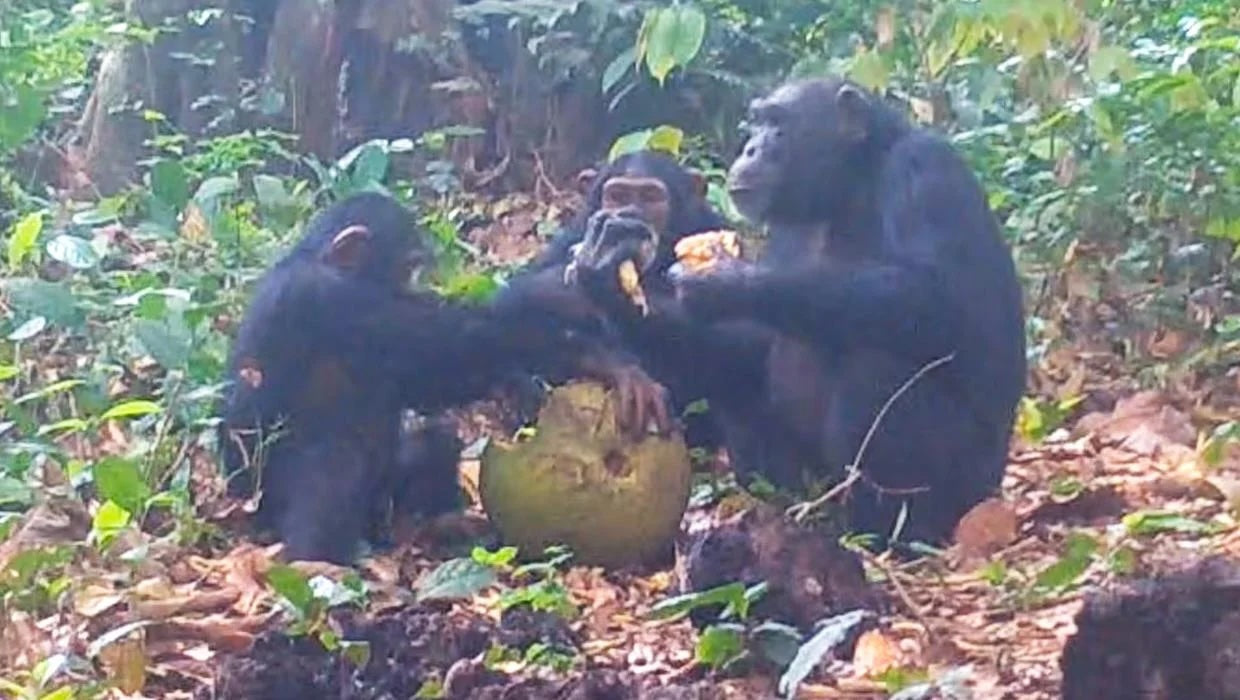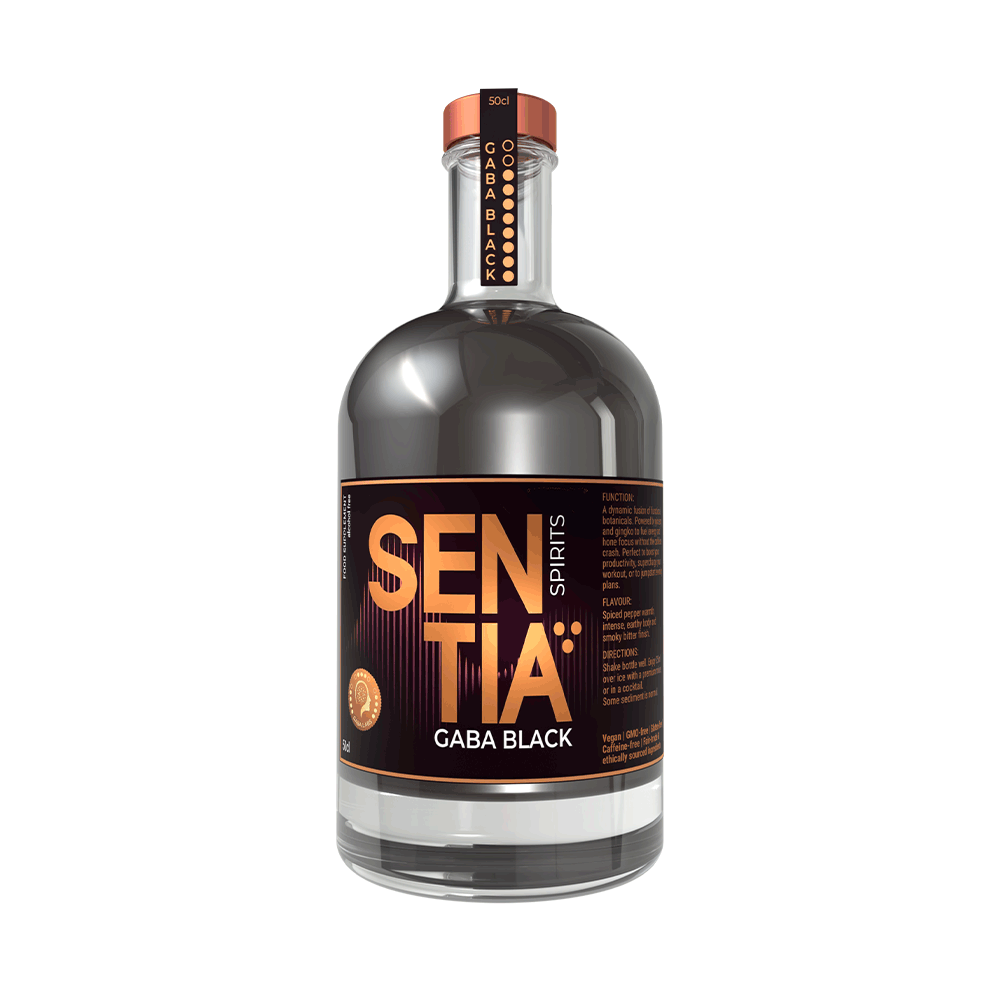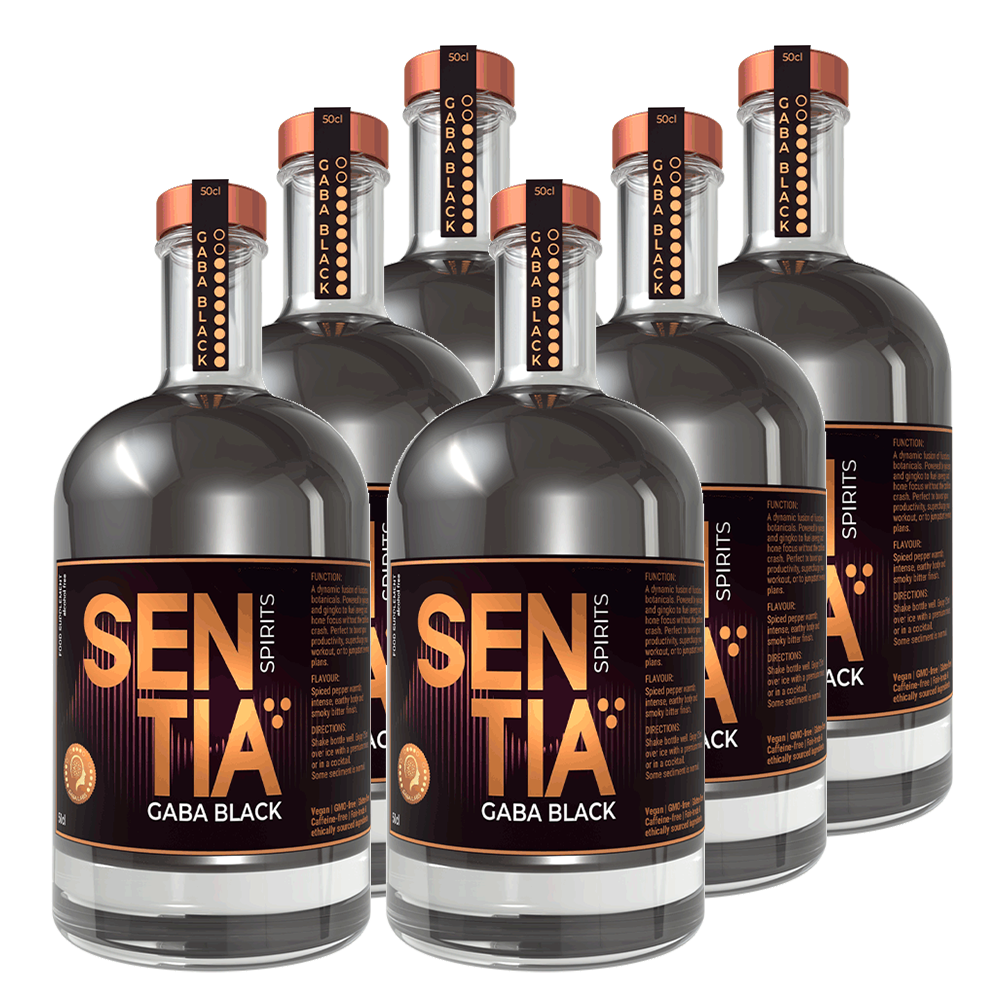
Chimps, Community, and the Future of Feasting
What Fermented Breadfruit Teaches Us About Alcohol and Human Connection
A recent study out of Guinea-Bissau has offered an unexpected window into the roots of our drinking culture—not at a bar, but deep in the forests of West Africa. There, wild chimpanzees have been observed consuming and sharing naturally fermented African breadfruit. It might seem like a curious bit of primate trivia, but this behaviour speaks volumes about the deep evolutionary history of sociability, feasting, and—yes—alcohol.
At SENTIA Spirits, we’re all about enhancing social connection. But we’re also about doing it smarter. That’s why this new research is so compelling: it helps explain why humans have used alcohol for millennia—and how we might evolve beyond it.
Chimps Who Share Their Booze?
In the study published in Current Biology, researchers documented chimpanzees eating fruit from the Treculia africana tree, which ferments as it ripens on the ground. These fruits—some weighing up to 30kg—can reach alcohol concentrations of up to 0.61% ABV. That’s about the same as some kombuchas, and a far cry from modern spirits.
But here’s the twist: the chimps didn’t just eat these boozy fruits—they shared them. Across 70 feeding events, researchers observed 10 separate instances of food sharing involving these fermented fruits. These interactions spanned age and sex, and were often not motivated by scarcity—meaning chimps actively chose to share the more fermented fruits even when less fermented ones were available nearby.
This is remarkable. Chimps aren’t known for sharing food unless there's a compelling reason—usually kinship or social bargaining. That they’d make an exception for fermented fruit suggests these substances may trigger chemical systems in the brain that promote bonding—systems involving dopamine, oxytocin, and endorphins.
Sound familiar?
From Breadfruit to Beer Halls
Anthropologists have long speculated that alcohol helped shape the earliest human social structures. Feasting, it seems, wasn’t just about calories—it was about connection. When humans began fermenting fruit and grains, we weren’t just inventing beverages—we were inventing a reason to come together. The low-alcohol drinks of prehistory were seasonal and unstable. If you didn’t drink them fast, they spoiled. And so people gathered.
Places like Göbekli Tepe in Turkey—home to the oldest known ritual site on Earth—are full of evidence for this kind of communal drinking. Fermented barley. Totemic animals. Monumental stone circles. These weren’t permanent homes—they were festival grounds.
Such sites show us that alcohol, for much of human history, wasn’t about individual indulgence. It was about group experience, often in deeply emotional or spiritual contexts. It made people relax, open up, bond. It helped build community.
Alcohol: Ancient Technology, New Problems
The chimp study invites us to ask: did the link between food and alcohol sharing begin long before we were human? And was this link, from the very beginning, about overcoming competition?
In both chimps and humans, sharing food—especially high-value or rare food—goes against the grain of evolutionary selfishness. But the neurochemical boost we get from shared consumption—oxytocin for bonding, dopamine for pleasure—rewards generosity. The fermented fruit isn’t just nutrition. It’s a social tool.
Yet here's the catch: alcohol was once weak, seasonal, and difficult to store. Today, it’s strong, ubiquitous, and industrially produced. We’ve supercharged an ancient tool, and with that comes modern consequences: violence, dependency, poor judgment.
As Professor David Nutt puts it, “Alcohol is one of humanity’s oldest technologies—but like many ancient tools, it needs an upgrade. We’ve learned to harness renewable energy, build reusable rockets, and wipe out diseases like smallpox. It’s time we looked beyond the horizon of alcohol.”
The GABA Pathway: Connection Without Compromise
So why do the team at SENTIA Spirits care about what chimps are getting up to? Well, our drinks are designed to activate the GABA system in the brain—the same system alcohol affects to promote feelings of calm and sociability. But unlike alcohol, SENTIA doesn’t hijack dopamine or endorphin systems in a way that can spiral into risky behaviour.
GABA is the neurotransmitter that helps us feel safe, settled, and relaxed. It’s the door-opener. Once we’re relaxed, we can naturally experience the dopamine and serotonin highs of human connection—without the rollercoaster of intoxication.
In other words, SENTIA supports the same social function alcohol historically served, but without the downsides. Think of it as a return to the original fermentation party—more like breadfruit than brandy.
From Feasting Chimps to Future Festivals
So perhaps humans didn’t invent the ritual of “lifting a cup together.” Perhaps we inherited it. The breadfruit-sharing chimps remind us that communal consumption of mild alcohol—or GABA-enhancing substances—may have been part of the social glue long before we walked upright.
And that’s the heart of what we do at SENTIA: honour the social value of drinking, while leaving behind the damage it too often brings. We're not rejecting our evolutionary inheritance. We’re updating it.
As we look forward to summer gatherings, family feasts, and festival season, maybe it's time to ask: what if we could keep all the warmth, openness, and bonding of the shared drink—and skip the regret, and the risk?

